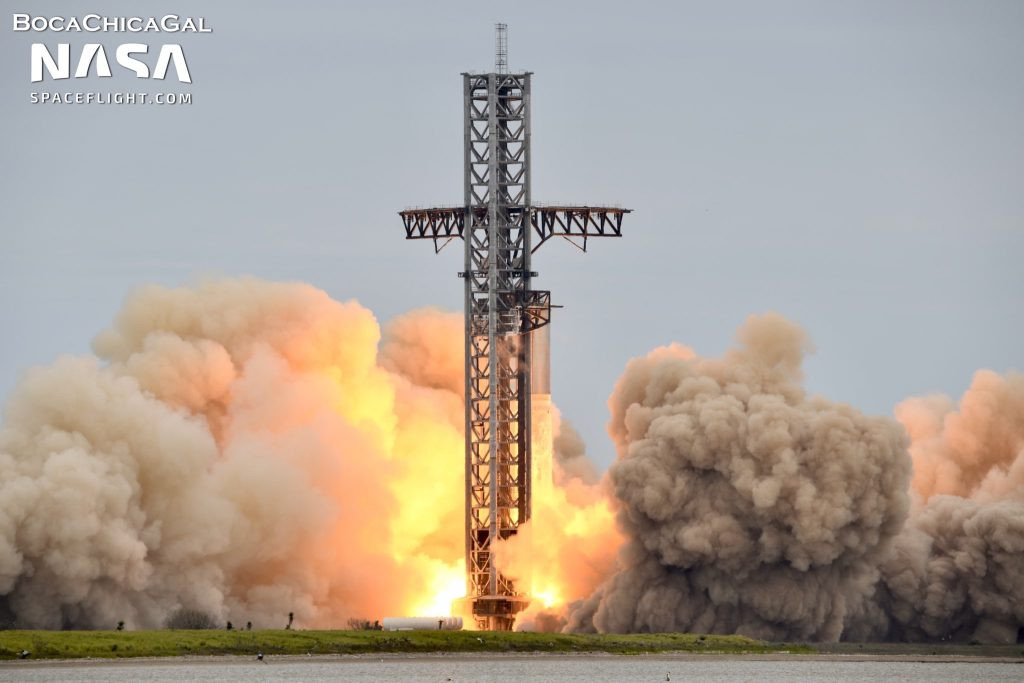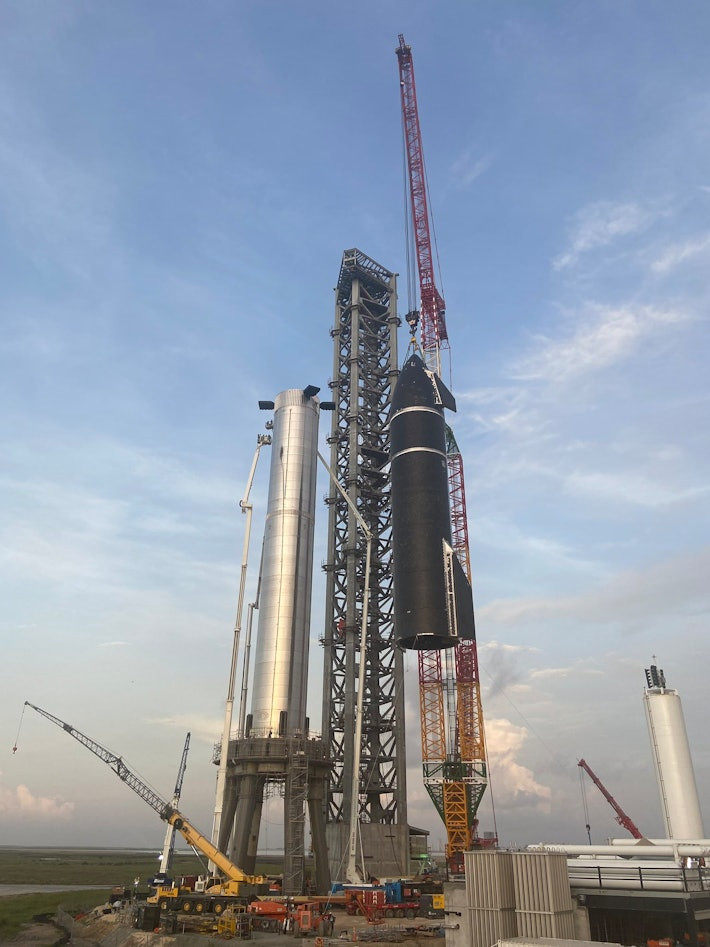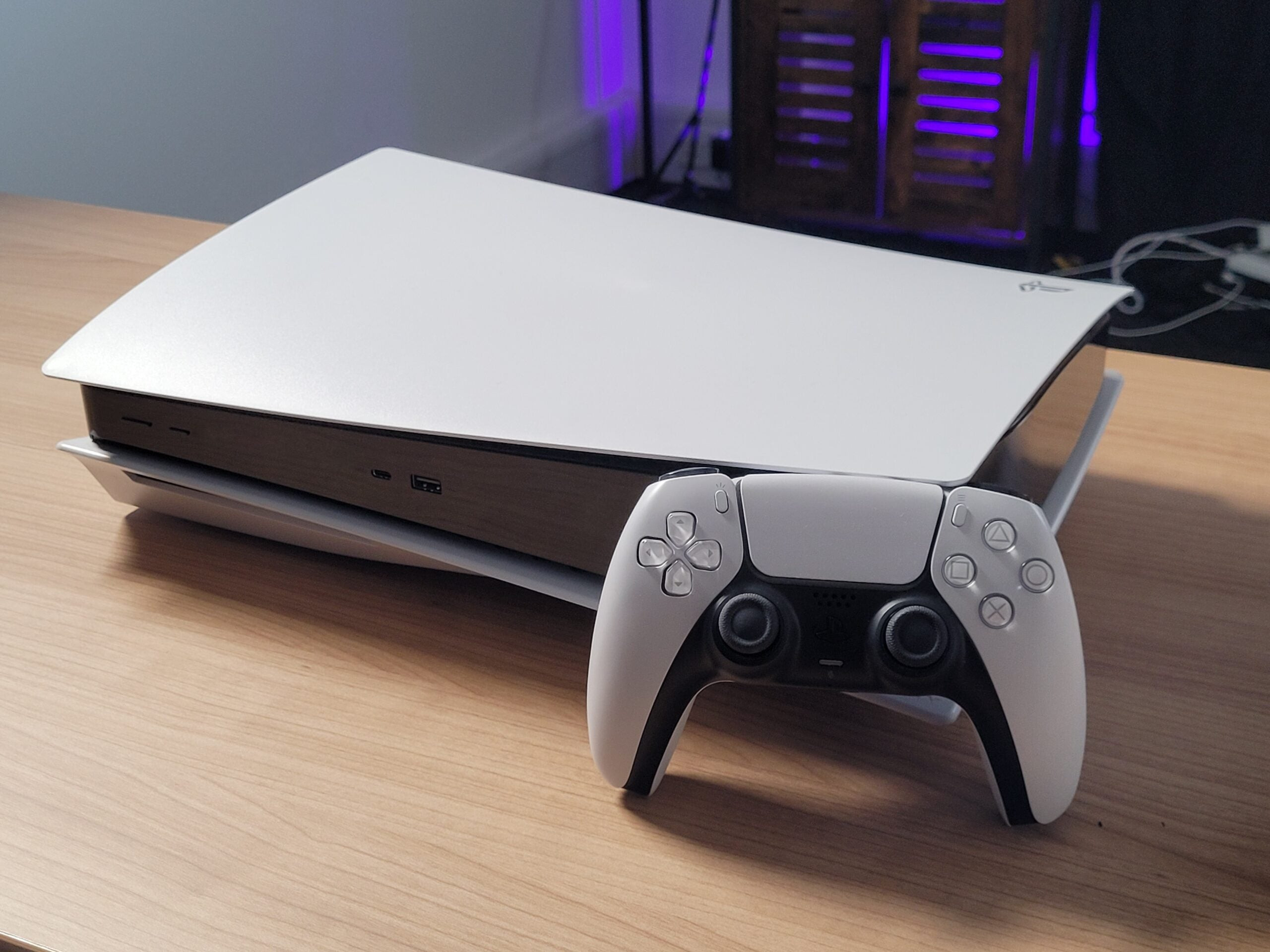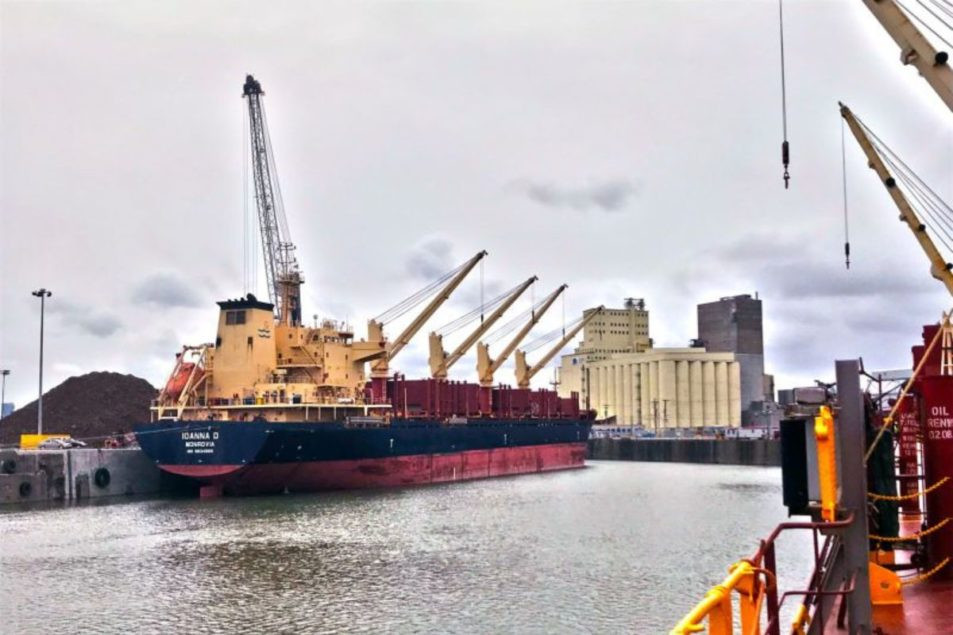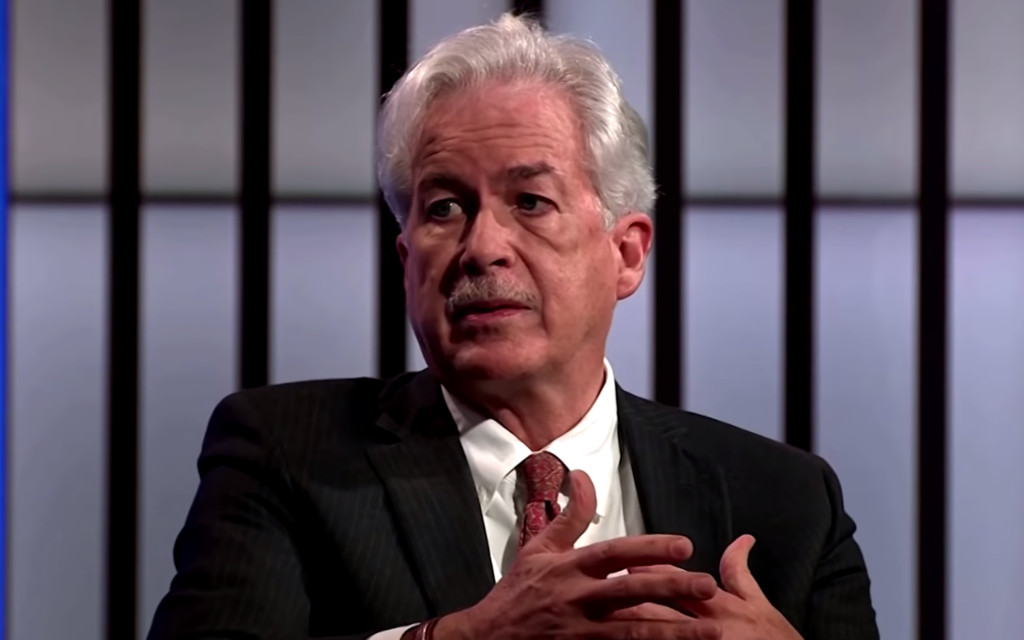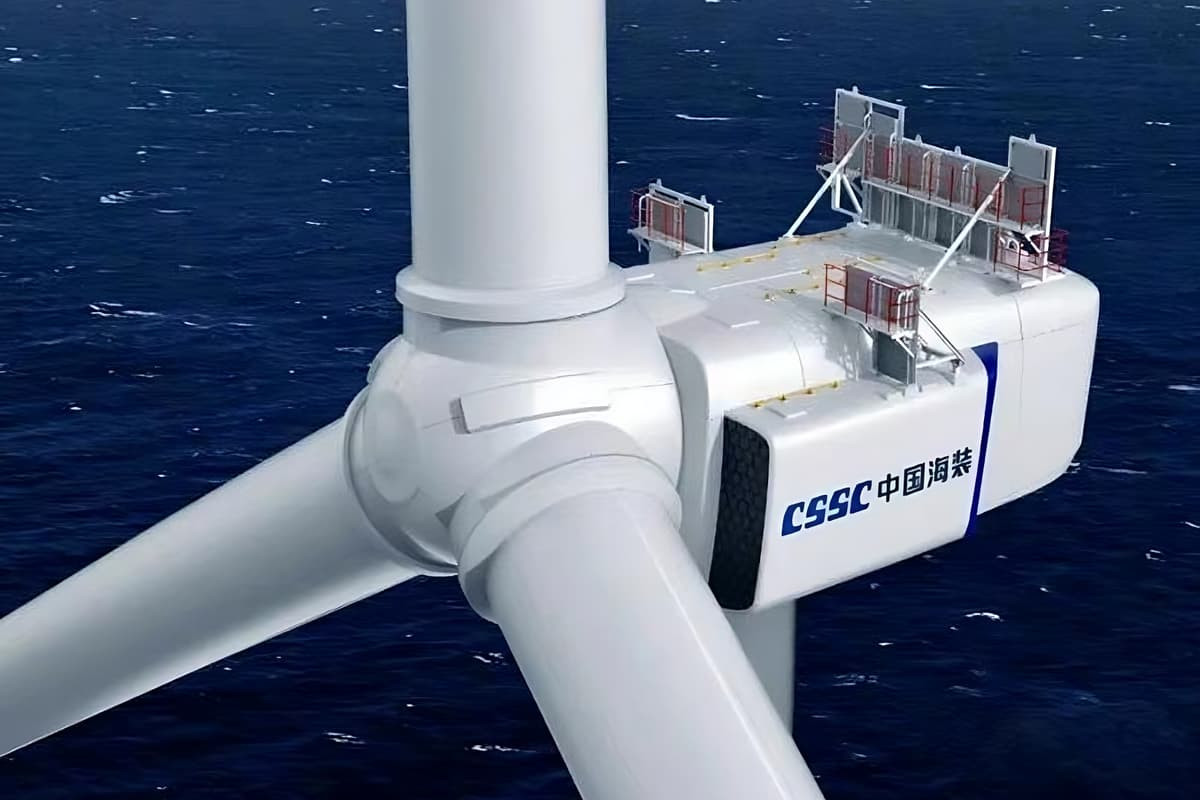SpaceX has pulled off the boldest test flight yet of its enormous Starship rocket, catching the returning booster back at the launch pad with mechanical arms. A jubilant Elon Musk called it “science fiction without the fiction part.”
Towering almost 400 feet (121 meters), the empty Starship blasted off at sunrise from the southern tip of Texas near the Mexican border. It arced over the Gulf of Mexico like the four Starships before it that ended up being destroyed, either soon after liftoff or while ditching into the sea. The previous one in June had been the most successful until Sunday's demo, completing its flight without exploding.
This time, Musk, SpaceX's CEO and founder, upped the challenge for the rocket that he plans to use to send people back to the moon and on to Mars. At the flight director's command, the first-stage booster flew back to the launch pad where it had blasted off seven minutes earlier. The launch tower's monstrous metal arms, dubbed chopsticks, caught the descending 232-foot (71-meter) stainless steel booster and gripped it tightly, dangling it well above the ground.
“The tower has caught the rocket!!” Musk announced via X. “Big step towards making life multiplanetary was made today.” Company employees screamed in joy, jumping and pumping their fists into the air. NASA joined in the celebration, with Administrator Bill Nelson sending congratulations. Continued Starship testing will prepare the nation for landing astronauts at the moon’s south pole, Nelson noted. NASA’s new Artemis program is the follow-up to Apollo, which put 12 men on the moon more than a half-century ago.
“Folks, this is a day for the engineering history books,” SpaceX engineering manager Kate Tice said from SpaceX headquarters in Hawthorne, California. “Even in this day and age, what we just saw is magic,” added company spokesman Dan Huot from near the launch and landing site. “I am shaking right now.”
It was up to the flight director to decide, in real time with a manual control, whether to attempt the landing. SpaceX said both the booster and launch tower had to be in good, stable condition. Otherwise, it was going to end up in the gulf like the previous ones. Everything was judged to be ready for the catch.
Once free of the booster, the empty retro-looking spacecraft on top continued around the world. An hour later, it made a controlled landing in the Indian Ocean, adding to the day's achievement. Cameras on a nearby buoy showed flames shooting up from the water as the booster impacted precisely at the targeted spot and sank, as planned. “What a day,” Huot said. “Let's get ready for the next one.”
The June flight came up short at the end after pieces came off. SpaceX upgraded the software and reworked the heat shield, improving the thermal tiles.
SpaceX has been recovering the first-stage boosters of its smaller Falcon 9 rockets for nine years, after delivering satellites and crews to orbit from Florida or California. But they land on floating ocean platforms or on concrete slabs several miles from their launch pads — not on them. Recycling Falcon boosters has sped up the launch rate and saved SpaceX millions. Musk intends to do the same for Starship, the biggest and most powerful rocket ever built with 33 methane-fuel engines on the booster alone.
Musk said the captured Starship booster looked to be in good shape, with just a little warping of some of the outer engines from all the heat and aerodynamic forces. That can be fixed easily, he noted. NASA has ordered two Starships to land astronauts on the moon later this decade. SpaceX intends to use Starship to send people and supplies to the moon and, eventually Mars.
A Bold Move For Rapid Reusability
The Starship/Super Heavy vehicle lifted off from the company’s Starbase site at Boca Chica, Texas, at 8:25 a.m. Eastern on a mission called Flight 5 by SpaceX. The main upgrade for this test was an attempt by SpaceX to recover the Super Heavy booster by having it come back to the launch site, where it would be cradled by two mechanical arms, sometimes called “chopsticks,” attached to the launch tower it lifted off from. That required the booster to perform precise boostback and landing burns to guide the stage back to the launch pad.
The Super Heavy booster, known as Booster 12, achieved that feat. The booster descended over the pad and the two arms closed around the top of the booster, just below the grid fins, about seven minutes after liftoff, achieving the desired catch of the booster.
Achieving the launch pad return and landing is critical to SpaceX’s long-term ambitions for rapid reflight of the vehicle. In the company’s vision, the landed booster could be rapidly turned around on the pad, with a Starship attached for its next flight within days or even hours.
The success of the catch appeared to take even company leaders by surprise. “I don’t know what to say!” posted Gwynne Shotwell, president and chief operating officer of the company, on social media, attaching a video of the landing. Before the launch, though, Bill Gerstenmaier, vice president of build and flight reliability, was optimistic about the catch attempt. “We landed with half a centimeter accuracy in the ocean” on the previous flight, he said at an Oct. 9 meeting of the National Academies’ Committee on Biological and Physical Sciences in Space, “so we think we have a reasonable chance to go back to the tower.”
Starship's Journey to the Indian Ocean
The Starship vehicle, Ship 30, flew on a suborbital trajectory similar to the previous flight in June, reaching a peak altitude of 212 kilometers. The vehicle appeared to survive reentry in better condition than on that previous flight; SpaceX noted it made changes to Starship’s heatshield. The vehicle made a powered ocean “landing” in the Indian Ocean nearly 66 minutes after liftoff, with the vehicle, not intended to be recovered, exploding several seconds after splashing down.
“Ship landed precisely on target!” Elon Musk, chief executive of SpaceX, posted minutes after the landing. “Second of the two objectives achieved.”
FAA License and Environmental Concerns
The license required revisions to an environmental assessment because of changes in the flight profile, including a larger area where the interstage ring, also called a forward heat shield in FAA documents, might be dropped in the Gulf of Mexico as well as a sonic boom analysis for the returning Super Heavy booster.
That environmental analysis, signed and published a few hours before the license was granted, concluded “no structural damage or significant impacts to third-party structures is anticipated” from sonic booms. “No adverse impacts to biological resources in the Gulf of Mexico are anticipated as a result of the proposed change to the forward heat shield landing location,” it stated.
The analysis, though, does include several conditions related to the overall effects of Starship launches at Boca Chica, including “field experiments to determine the extent of the gravel plume impact area” caused by Starship launches, which would support any measures to protect bird nests in the surrounding wildlife preserve, as well as monitor other impacts of the launches on birds there. The company must also provide an annual certification “attesting to SpaceX’s compliance with all applicable environmental laws, regulations, permits, or other authorizations” relating to launches at Starbase.
SpaceX compliance to those laws has also been a topic of controversy regarding the permitting of a water deluge system at the pad, which resulted in the company agreeing to a nearly $150,000 fine from the Environmental Protection Agency for operating the deluge system with an EPA permit. The company noted it did have a permit from Texas regulators.
The revised license requires SpaceX to provide the company with the state and, when completed, EPA permits for the deluge system and “to send the FAA copies of all monitoring data within 45 days of sampling the use of its deluge system.”
The license does allow SpaceX to conduct at least one more launch, called Flight 6, using the same profile without obtaining another authorization from the FAA. “The SpaceX Starship/Super Heavy Flight 5 license authorization also includes FAA approval of the Flight 6 mission profile,” the agency stated. “The FAA determined the changes requested by SpaceX for Flight 6 are within the scope of what has been previously analyzed.” The agency didn’t state what those changes were.
The Future of Starship
SpaceX launched its fifth test flight of its Starship rocket on Sunday and made a dramatic first catch of the rocket’s more than 20-story tall booster. Elon Musk’s company launched Starship at 8:25 a.m. ET from its Starbase facility near Brownsville, Texas.
The rocket’s “Super Heavy” booster returned to land on the arms of the company’s launch tower, in a dramatic catch. “Are you kidding me?” SpaceX communications manager Dan Huot said on the company’s webcast. “What we just saw, that looked like magic,” Huot added.
Starship separated and continued on to space, aiming to travel halfway around the Earth before reentering the atmosphere and splashing down in the Indian Ocean.
The Federal Aviation Administration issued SpaceX with a license to launch Starship’s fifth flight on Saturday, sooner than the regulator previously estimated. There are not any people on board the fifth Starship flight.
SpaceX has flown the full Starship rocket system on four spaceflight tests so far, with launches in April and November of last year, as well as this March and June. Each of the test flights have achieved more milestones than the last. The company’s rocket successfully completed a flight test for the first time during the June flight, as Starship splashed down in the Indian Ocean after surviving the intense forces of reentering the atmosphere. Additionally, the rocket’s booster return in one piece to make a controlled splashdown in the Gulf of Mexico.
The Starship system is designed to be fully reusable and aims to become a new method of flying cargo and people beyond Earth. The rocket is also critical to NASA’s plan to return astronauts to the moon. SpaceX won a multibillion-dollar contract from the agency to use Starship as a crewed lunar lander as part of NASA’s Artemis moon program. The company’s leadership has said SpaceX expects to fly hundreds of Starship missions before the rocket launches with any crew.
SpaceX emphasizes that it tries to build “on what we’ve learned from previous flights” in its approach to developing the massive rocket. But the company wanted to launch the fifth flight earlier than October, leading both SpaceX and Musk to be vocally critical of the FAA, saying that “superfluous environmental analysis” was holding up the process. While the FAA and partner agencies at the U.S. Fish and Wildlife Service and the Commerce Department’s National Marine Fisheries Service conducted assessments more quickly than anticipated, SpaceX has also had to pay fines to environmental regulators regarding unauthorized water discharges at its Texas launch site.
With the booster catch, SpaceX has surpassed the fourth test flight’s milestones. The company completed its goal of returning the booster back to the launch site and use the “chopstick” arms on the tower to catch the vehicle. The company sees the ambitious catch approach as critical to its goal of making the rocket fully reusable. “SpaceX engineers have spent years preparing and months testing for the booster catch attempt, with technicians pouring tens of thousands of hours into building the infrastructure to maximize our chances for success,” the company wrote on its website. The catch requires thousands of criteria to be met, the company said. If it hadn’t been ready, the booster would have diverted from the return trajectory to instead splash down off the coast in the Gulf of Mexico. “We accept no compromises when it comes to ensuring the safety of the public and our team, and the return will only be attempted if conditions are right,” SpaceX said.
Starship: A Giant Leap for Mankind
Starship is both the tallest and most powerful rocket ever launched. Fully stacked on the Super Heavy booster, Starship stands 397 feet tall and is about 30 feet in diameter. The Super Heavy booster, which stands 232 feet tall, is what begins the rocket’s journey to space. At its base are 33 Raptor engines, which together produce 16.7 million pounds of thrust — about double the 8.8 million pounds of thrust of NASA’s Space Launch System rocket, which launched for the first time in 2022. Starship itself, at 165 feet tall, has six Raptor engines — three for use while in the Earth’s atmosphere and three for operating in the vacuum of space. The rocket is powered by liquid oxygen and liquid methane. The full system requires more than 10 million pounds of propellant for launch.




